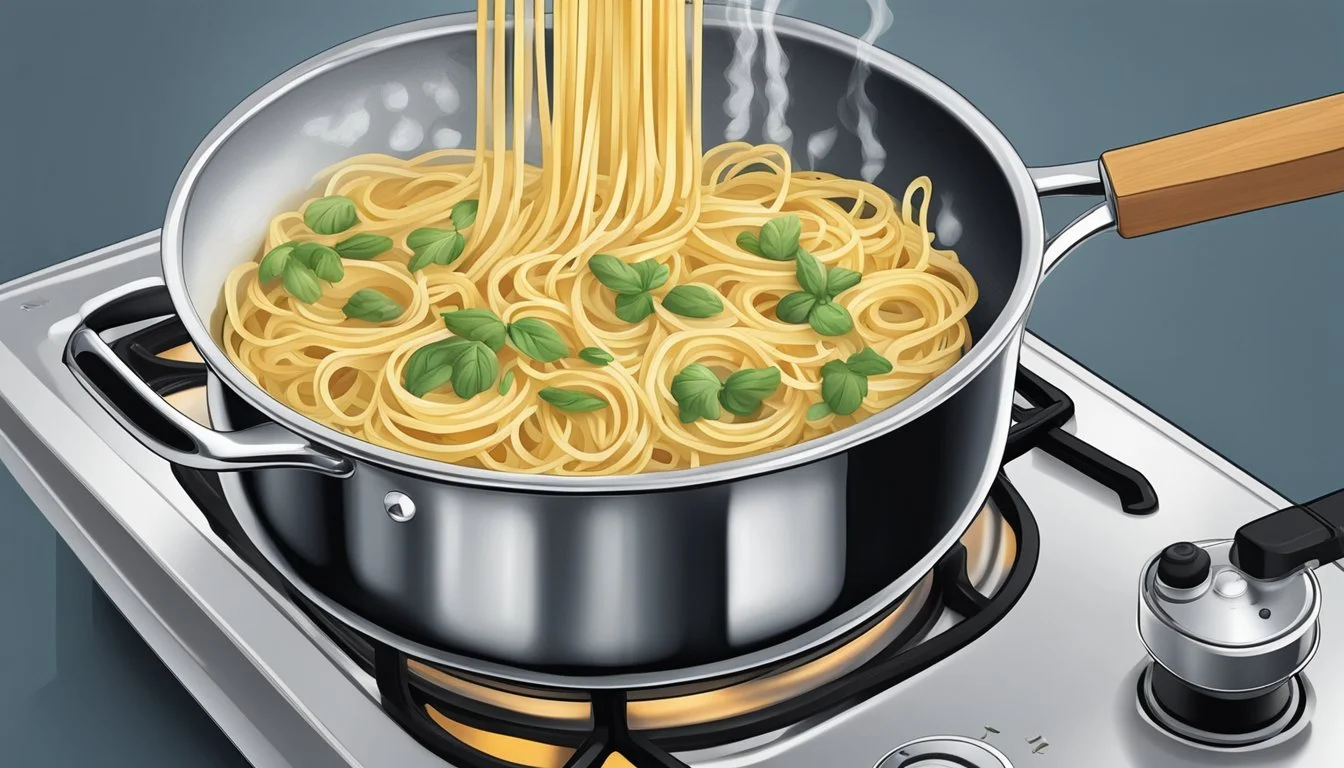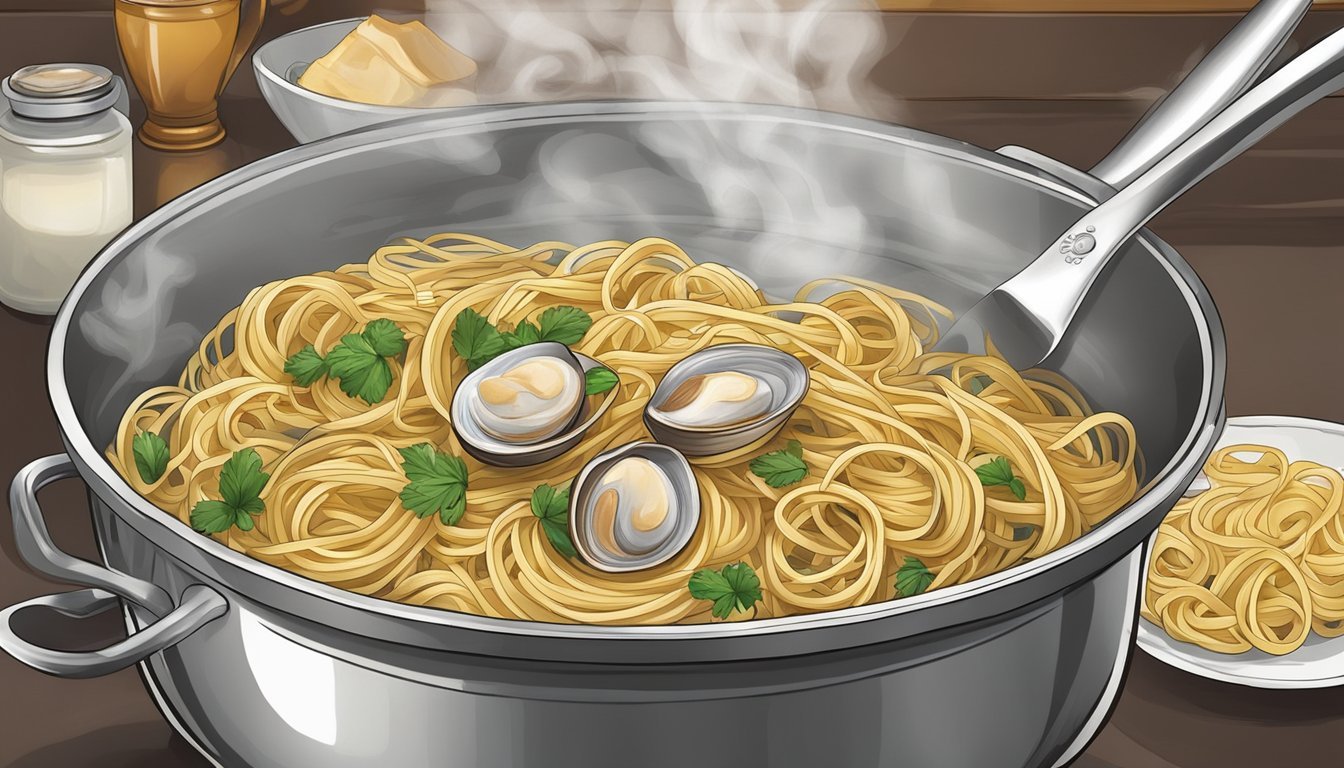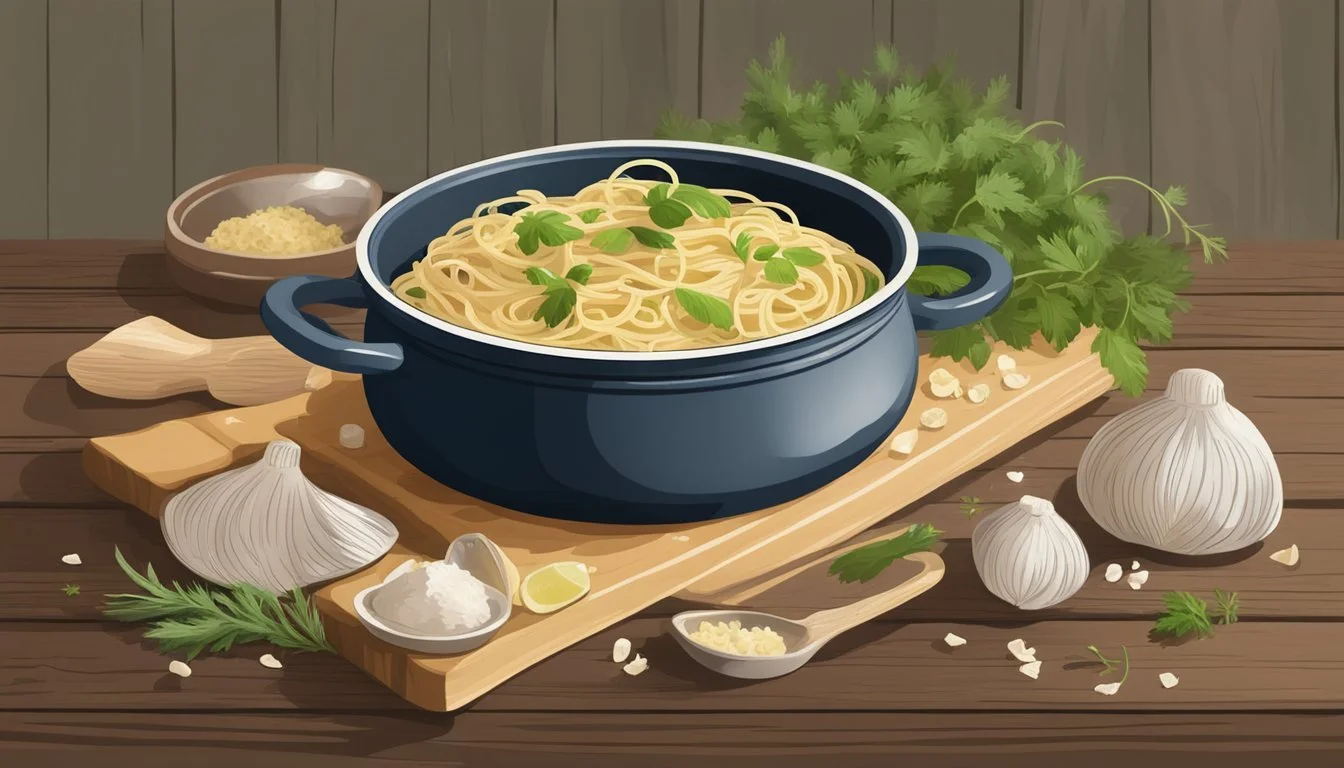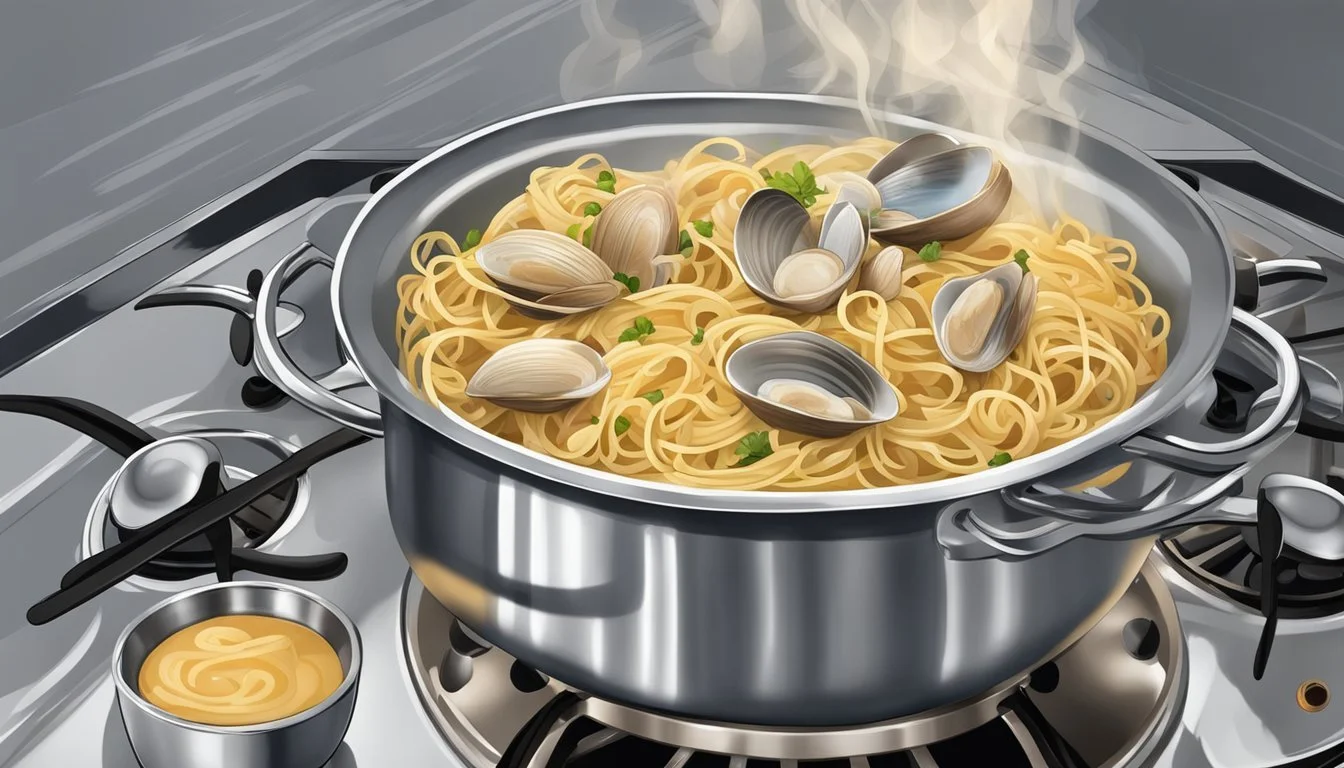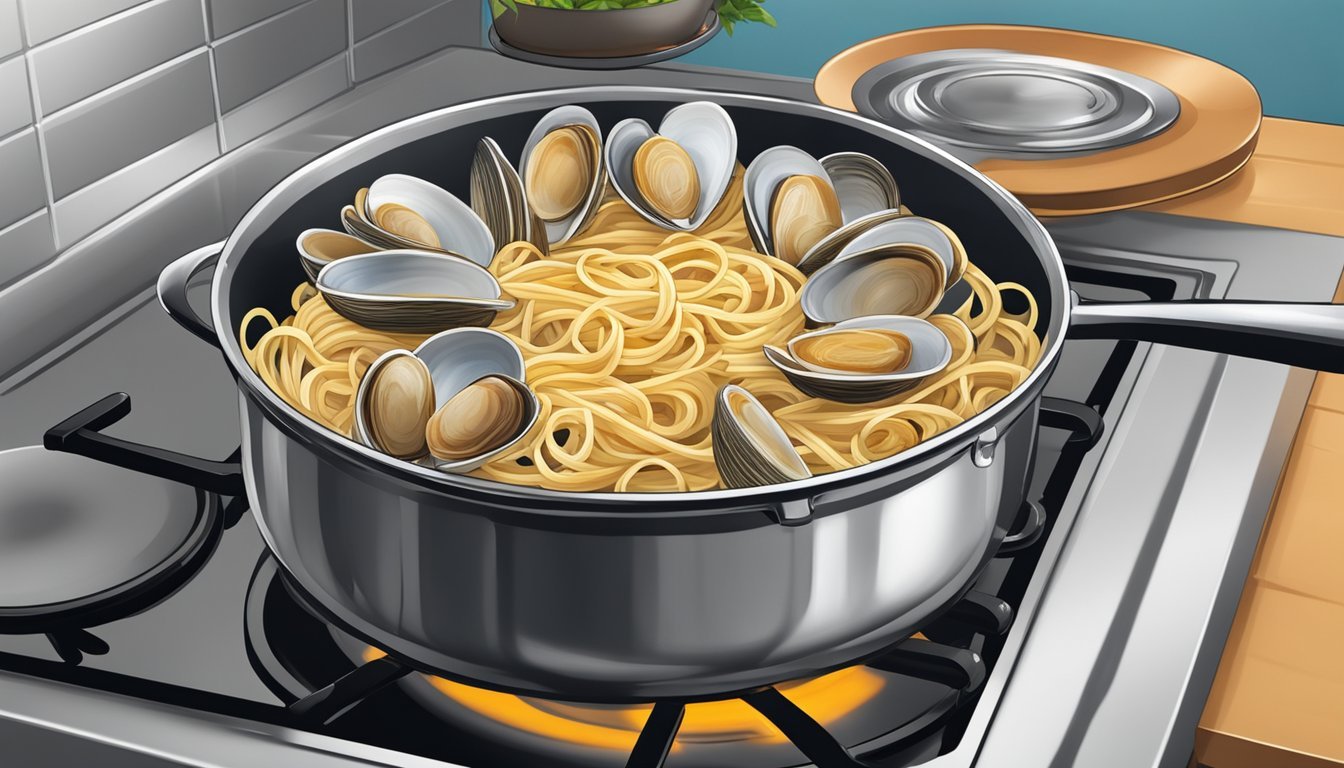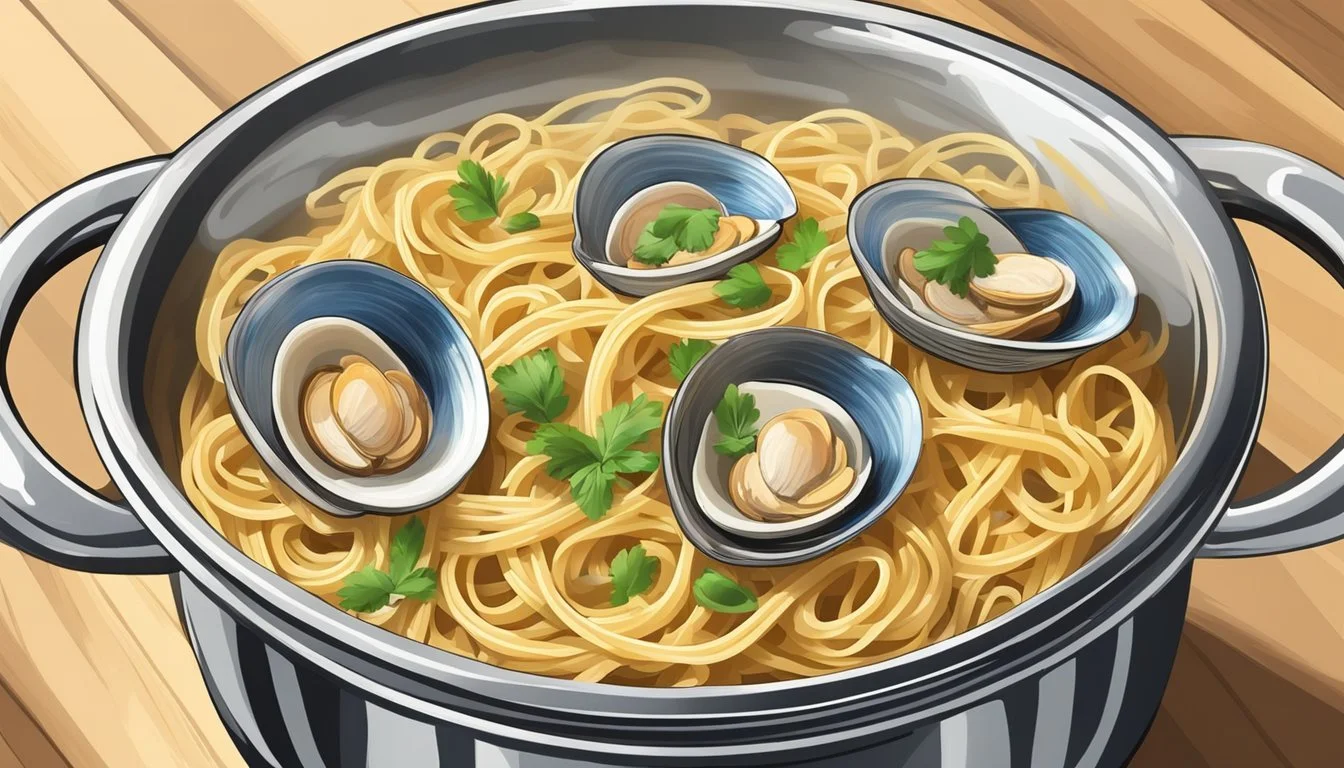Best Way to Reheat Linguine with Clam Sauce
Ensuring Perfect Texture Every Time
Reheating linguine with clam sauce while maintaining the delicate texture of the pasta (What wine goes well with pasta?) and the tenderness of the clams (What wine goes well with clams?) can be a culinary challenge. Leftover linguine, when not reheated properly, has a tendency to become mushy, and the clams may turn rubbery, losing their delectable appeal. It is crucial to approach this task with a method that carefully considers the distinct elements of the dish. A suitable reheating process ensures that the linguine remains al dente, which means “to the tooth” in Italian, signifying pasta that is cooked to be firm when bitten. Simultaneously, the clams need to be warmed through without becoming tough.
One proven method for reheating linguine with clams involves the use of an oven. This method ensures even heating and helps retain the moisture that is essential to the dish's flavor and texture. To start, the oven is preheated to a moderate temperature, then the pasta is placed in an oven-safe dish. If available, a lid or a layer of parchment paper can be used to cover the dish, trapping steam and preventing the pasta and clams from drying out.
On the other hand, for a quicker option, a microwave can also be employed with caution. The linguine with clams is placed in a microwave-safe dish, lightly covered. Adding a small amount of liquid helps maintain moisture. The dish is microwaved in short bursts, stirring in between to ensure even heating and prevent the pasta from sticking together. Both methods have their merits, and choosing the right one ultimately depends on the time available and the diner's preference for texture and consistency.
Understanding Pasta Reheating Principles
To successfully reheat linguine with clam sauce while preserving the desirable 'al dente' texture of the pasta and the tenderness of the clams, one must understand the underlying science of reheating pasta and the impact of different methods.
The Science of Al Dente
The term 'al dente' refers to pasta that is cooked to be firm to the bite, which is especially important when reheating linguine. Overcooked pasta becomes mushy due to the breakdown of starches. When reheating, maintaining the right balance of heat and moisture is crucial to avoid further cooking the pasta beyond the al dente stage.
Pasta Reheating Methods
Several methods exist for reheating pasta, each affecting the pasta's texture:
Microwave: Brief intervals with added moisture such as a splash of water or pasta water help prevent drying out. Cover the pasta loosely to trap steam and reheat evenly.
Oven: For larger quantities, spreading the linguine in an even layer and loosely covering with foil can gently warm without overcooking. A moderate oven temperature, around 350°F, for 10-15 minutes usually suffices.
Stovetop: This is ideal for reviving leftover pasta with sauce. Adding a liquid like dry white wine or pasta water while reheating can refresh the dish without overcooking the noodles.
Common Reheating Mistakes
Overheating: Applying too much heat for too long can turn al dente pasta into a mushy disappointment.
Uneven heating: Not stirring pasta during the reheating process can result in inconsistent temperatures.
Lack of moisture: Forgetting to add a bit of water or sauce can lead to dry and unappetizing leftover pasta.
Preparing for Reheating
Effective reheating of linguine with clam sauce begins with proper storage and ends with choosing the optimal tools to restore the dish to its original glory. Careful preparation ensures the pasta remains al dente and the clams stay tender.
Storing Leftover Linguine
The key to successfully reheating linguine with clam sauce is to store the leftovers properly. Refrigeration plays a crucial role in this process. One should:
Allow the linguine with clam sauce to cool to room temperature.
Transfer the leftover pasta to airtight containers or tightly wrap it with cling film to prevent air exposure.
Drizzle a small amount of extra-virgin olive oil over the pasta to keep it from sticking together.
Store the container in the refrigerator to preserve freshness. The maximum recommended storage time is two to three days to maintain quality.
Choosing the Right Reheating Tools
Selecting the appropriate reheating method determines the texture of the linguine and the tenderness of the clams. For the stove method, having a skillet of an adequate size is critical because it allows for even heat distribution. When using a microwave, a microwave-safe dish is essential to avoid warping or other microwave-related damages to the container.
Skillet: Ideal for reheating over the stove and helps in achieving evenly warmed through pasta and clams without sacrificing texture.
Microwave-safe dish: Necessary for quick reheating in the microwave, though it can be challenging to retain the perfect consistency of the linguine and clams.
Reheating Techniques for Linguine with Clam Sauce
When reheating linguine with clam sauce, the goal is to maintain the delicate texture of the pasta and the tenderness of the clams. Utilizing the proper technique ensures the dish tastes freshly prepared.
Skillet Method
For a quick and effective way to reheat linguine with clam sauce, the skillet method on the stove works well especially for seafood pastas. Heat a skillet over medium heat and add a small amount of olive oil or unsalted butter to prevent sticking. Transfer the linguine and clam sauce to the skillet, adding a splash of pasta water or clam juice to loosen the sauce and keep everything moist. Gently stir until the pasta is hot and the clams are warmed through, usually taking a few minutes. Be careful not to overcook to keep the clams tender.
Microwave Technique
Reheating in a microwave is convenient, though care must be taken not to overheat, which can make the clams rubbery. Place the linguine with clam sauce in a microwave-safe dish, sprinkling a few drops of water or clam juice over the top to keep it moist. Cover the dish with a lid or microwave-safe cover. Heat on medium power in 15-second increments, stirring between each interval to ensure even heating and to preserve the texture of the pasta and clams.
Oven Warming Approach
The oven is a suitable method for gently reheating a larger portion of linguine with clam sauce. Preheat the oven to 350°F (175°C). Place the pasta in an oven-safe dish, adding a little liquid such as pasta water, clam juice, or a pat of unsalted butter, and cover with foil or a lid. Bake for about 20 minutes or until the dish is heated throughout. This slow heating method helps to keep the clams tender and avoid drying out the pasta.
Clam Handling Tips
When reheating linguine with clam sauce, the texture of the clams is critical for an enjoyable meal, and the choice between fresh and canned clams can greatly affect the final dish.
Keeping Clams Tender
Fresh clams should be steamed just until they open, which typically takes 6 to 8 minutes. Overcooking clams makes them tough, so when reheating, it's crucial to warm them through gently, preferably in a sauce to keep the moisture intact. If the linguine with clam sauce is being reheated, do so on a gentle heat in a covered pan, monitoring closely to prevent the clams from becoming rubbery.
Using Fresh Versus Canned Clams
Fresh clams bring a superior flavor and texture that is particularly noteworthy in dishes like linguine alle vongole. However, for a quick and easy alternative, canned clams can be suitable substitutes due to their convenience and longer shelf life.
Fresh Clams:
Should be cleaned properly and checked for any that may be open prior to cooking; discard these.
Rich in protein, they elevate the dish when steamed correctly and added with garlic, butter, and olive oil.
Canned Clams:
Easier to handle and often pre-cooked, which shortens preparation time.
Should be added towards the end of the cooking process to avoid overcooking and maintain tenderness.
Remember, when using fresh clams, always reserve some of the steaming liquid to incorporate into the sauce for added seafood flavor, whereas canned clams typically come with a flavored broth that can be used similarly.
Enhancing the Flavor Profile
When reheating linguine with clam sauce, maintaining the integrity of the original flavors is key. Careful addition of herbs, spices, and a complementary wine can elevate the dish, ensuring an aromatic, well-rounded taste.
Herbs and Spices
Incorporating fresh herbs and spices elevates the warmth and complexity of the linguine with clam sauce. The following accents are recommended:
Fresh flat-leaf parsley: Adds a mild, herby freshness when sprinkled on top of the dish after reheating.
Garlic: Infuse additional minced fresh garlic during reheating to intensify the flavor.
Red pepper flakes: A pinch of crushed red pepper flakes can enhance the pasta's flavor with a gentle heat.
Lemon zest: Stirring in delicate lemon zest brightens the profile, complementing the brininess of the clams.
Basil: Finely chopped basil leaves can introduce a sweet peppery taste that balances the robustness of the clam sauce.
Salt and pepper: Adjust with kosher salt and freshly ground black pepper to taste.
Complementing with Wine
A thoughtful selection of white wine can be used to both cook and complement the dish. The ideal choices include:
Pinot Grigio: Its light and crisp nature respects the delicacy of the clams.
Sauvignon Blanc: Its acidity and herbal notes can enhance the brightness of the sauce.
It is essential that the wine selected for the sauce, whether in the original preparation or during reheating, is also served with the meal. This ensures a harmonious flavor experience. When reheating, sparingly add the same wine to avoid overpowering the sauce, and allow it to reduce and meld with the existing flavors.
Serving and Presentation
When reheating linguine with clam sauce, the meal's success hinges on maintaining the pasta’s al dente texture and the clams' tenderness. The following serving tips aim to present the dish in its best possible light, retaining the quality of a freshly-cooked meal.
Accompaniments and Side Options
Salad: A simple salad dressed with a vinaigrette made from extra-virgin olive oil and lemon juice complements the delicate flavors of linguine alle vongole. Consider greens like arugula or mixed baby lettuces.
Parmesan Cheese: A light sprinkling of freshly grated parmesan cheese adds a savory depth to linguine with white clam sauce while not overpowering the dish.
Crusty Bread: Serve alongside to soak up the flavorful clam sauce. Opt for bread with a chewy interior and a crisp crust.
Lemon Wedges: Offer lemon wedges for guests to squeeze over their serving, enhancing the seafood flavors with a touch of acidity.
Vegetables: Steamed or sautéed vegetables such as broccoli can provide a colorful and healthy side option. Ensure these are prepared just before serving to maintain their vibrant color and crisp texture.
Tips for Serving Leftovers
Pasta Dishes (What wine goes well with pasta dishes?): To serve leftover linguine with clam sauce, first gently reheat the linguine to keep it al dente. Then, warm the sauce separately, adding the clams only at the last minute to prevent overcooking.
Presentation: Reheated linguine with clam sauce can still be a centerpiece for a weeknight dinner. Serve it in a pre-warmed dish and drizzle a small amount of extra-virgin olive oil over the top for a glossy, restaurant-style appearance.
Easy to Make: Transform leftover linguine with clam sauce into a new dish by adding more vegetables or serving it cold as a pasta salad for a lunch option. This flexibility makes leftovers easy to use without compromising flavor or quality.
Alternate Pasta Dishes
When one considers alternatives to linguine with clam sauce, variety and flavor are essential. Here are a few dishes that promise to delight the palate while offering a different, yet equally satisfying, pasta experience.
Penne alla Vodka
A smooth, creamy tomato sauce spiked with vodka and a hint of chili flake, elevates Penne alla Vodka. It's often finished with a touch of heavy cream and fresh parmesan, ideal for those who appreciate a balance of rich and zesty flavors.
Ingredients: Penne, tomato sauce, vodka, chili flakes, heavy cream, parmesan
Preparation: Saute ingredients, simmer until thickened, toss with penne
Serving suggestion: Garnish with basil and more parmesan
Fettuccine Alfredo
For a truly indulgent pasta dish, nothing quite matches Fettuccine Alfredo. The key to its richness is the blend of butter and parmesan cheese that forms a luscious, velvety sauce.
Ingredients: Fettuccine, butter, heavy cream, parmesan cheese
Preparation: Melt butter, blend with cream, add cheese until sauce forms
Serving suggestion: Topped with parsley and black pepper
Spaghetti alla Puttanesca
Those seeking bold flavor will find comfort in Spaghetti alla Puttanesca. The sauce, a briny mix of anchovies, (What wine goes well with anchovies?) olives, (What wine goes well with olives?) capers, and tomatoes, packs a punch.
Ingredients: Spaghetti, anchovies, olives, capers, garlic, tomatoes
Preparation: Cook garlic and anchovies, add remaining ingredients, simmer
Serving suggestion: Serve with a sprinkle of parsley
Pappardelle with Wild Mushroom Ragù
Earthy and aromatic, Pappardelle with Wild Mushroom Ragù is a celebration of woodland flavors. Broad, flat noodles like pappardelle are ideal for clinging to the hearty chunks of mushroom and herb-infused sauce.
Ingredients: Pappardelle, assorted wild mushrooms, garlic, herbs
Preparation: Sauté mushrooms and garlic, add herbs, toss with cooked pasta
Serving suggestion: Finish with grated pecorino
Each of these pasta dishes offers a distinct flavor profile and texture, ensuring a diverse array of options for any pasta aficionado.
Kitchen Tips
Proper reheating of linguine with clam sauce can transform leftovers into a dish that rivals its original state. This clarity-focused guide details how to keep pasta al dente and clams tender while reheating.
Cookware and Utensil Essentials
Skillets: Use a heavy-bottomed skillet for even heat distribution when reheating on the stove.
Microwave-Safe Containers: If using a microwave, choose containers that are safe and do not leach into food.
Utensils: Have a spatula or tongs handy to gently toss the linguine, ensuring even heating.
Airtight Storage: Store leftover linguine with clam sauce in airtight containers to maintain freshness during refrigeration.
Efficient Kitchen Practices
Stove Reheating: For stove reheating, it's essential to use a skillet over low-to-medium heat to avoid overcooking the pasta.
Adding Liquids: When reheating, add a splash of cooking water or wine to keep the linguine moist.
Microwave Thawing: If pasta is refrigerated, briefly microwave it uncovered in 15-second intervals to bring to room temperature before stove reheating.
Cling Film: Use cling film loosely over microwave-safe dishes if microwave reheating is preferred to prevent pasta from drying out.
Applying these practices ensures that your linguine with clam sauce can be a quick weeknight dinner option that is not just easy to make but delicious and fresh as if it were just prepared.
Health and Nutrition
When considering reheating linguine with clam sauce, it’s important to evaluate both the caloric impact and the nutritional benefits the dish offers. By focusing on caloric considerations and the benefits of a seafood pasta like this one, individuals can make well-informed dietary choices that align with their health goals.
Caloric Considerations
Linguine with clam sauce is a fulfilling dish where the main components, pasta and clams, contribute to the total calorie count. Linguine, being a type of pasta, is typically high in carbohydrates. One cup of cooked linguine approximately contains 220 calories. Seafood, like clams, is generally low in calories and high in protein, with about 126 calories and 22 grams of protein per 100 grams of clams.
Ingredients such as olive oil and butter, often used in clam sauce, will add more calories. For example, one tablespoon of olive oil adds around 120 calories. To manage the calorie content, one can opt to measure the added fats carefully. Additionally, by incorporating low-calorie vegetables like broccoli or parsley , the dish becomes more nutrient-dense without adding many calories.
Nutritional information per 100g serving:
Cooked linguine: 158 calories, 30g carbs, 5.76g protein, 0.65g fat
Clams: 126 calories, 4g carbs, 22g protein, 1.89g fat
Olive oil: 884 calories, 0g carbs, 0g protein, 100g fat
Benefits of Seafood Pasta
Seafood pastas, including those made with clams, offer several health benefits. Clams are a robust source of lean protein, which is essential for muscle repair and growth. They are also rich in vitamins and minerals, like vitamin B12, iron, and omega-3 fatty acids, which are known to support heart health and cognitive function.
Linguine dishes often come with a variety of herbs and vegetables like garlic, parsley, and lemon juice, which not only enhance flavor but also contribute beneficial nutrients. Garlic, for example, has been recognized for its potential to reduce blood pressure and improve cholesterol levels.
When using olive oil, one enjoys a dose of healthy monounsaturated fats, which are good for heart health. Parsley, although used in small quantities, is a good source of vitamin K and C and provides antioxidant benefits. Lastly, if lemon juice is used in the dish, it can add a burst of vitamin C and can be helpful in iron absorption from the clams.
In summary, when reheating linguine with clam sauce, one can enjoy a meal that is not only rich in complex carbohydrates and high-quality protein but also packs a variety of essential nutrients beneficial for overall health.


